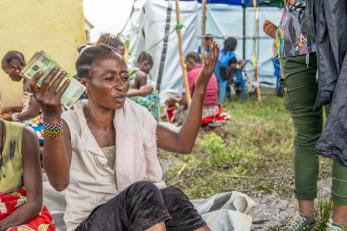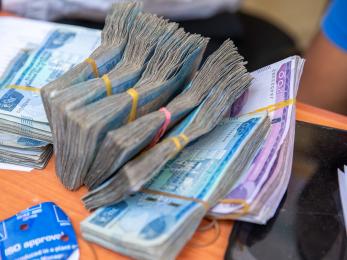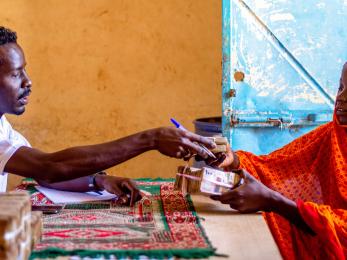DRC Humanitarian Crisis: Why Cash Is Best

Violence and instability, combined with a severe lack of basic services, have affected the population of the Democratic Republic of Congo (DRC) for decades. The country’s eastern provinces have become a perpetually insecure and hostile environment, with low intensity but increasing conflict. As a result, more than 25 million people—a quarter of the population—are estimated to need emergency assistance to survive in 2024, with 40% of the population facing severe levels of acute food insecurity (IPC 3 or higher). The DRC is one of the largest internal displacement crises in the world, with an estimated 7 million people displaced, mainly in the east of the country.
In 2024, eastern DRC, particularly North Kivu, experienced unprecedented levels of displacement due to a surge in violent conflict. The number of displaced people has almost tripled since August 2023, reaching over 1.6 million, with the majority being women and children (75%). In Goma for example, the number of displaced households in 2024 is 70% higher than in 2023.
Although the humanitarian situation has clearly deteriorated, the DRC remains one of the most neglected humanitarian crises today, with a lack of political attention and chronic funding shortfalls. In 2024 thus far, only 35% of the humanitarian response plan has been funded.
In the face of escalating challenges—such as climate-related shocks like flooding, persistent insecurity, and weak government capacity to deliver services—a new, more effective and efficient intervention model is urgently needed in the DRC.
For humanitarian action to become more effective and accountable to affected populations, the humanitarian community in the DRC must embrace and fully implement the global cash revolution.
Humanitarian donors and actors should take the following steps to responsibly scale up cash assistance and increase the efficiency of the humanitarian response in the DRC:
- Donors should significantly increase their budget allocations for CVA in the next financial year.
- Humanitarian actors should use cash as the default response wherever market functionality and security allow, and in line with community preferences.
- The HCT, CWG and Cluster Leads should lead efforts by all humanitarian actors to standardize the design and reporting of cash programming.
- Humanitarian cash actors, the HCT and the CWG should collectively engage with and push financial institutions such as banks, transfer agents and cooperatives to increase coverage and expand services to include wider adoption and coverage of digital transfer mechanisms, such as mobile money.
- Humanitarian donors and operational actors should ensure that the design of cash programs is informed by evidence of what works and evolving risks. This should include refusing to compromise on quality and fraud prevention to achieve greater speed.


